Blue Print of Nissan Versa Rear Wheel Bearing
Wheel bearings are parts that allow the wheels on your vehicle to spin freely and with as little friction as possible. A wheel bearing is a set of steel balls that are housed in a metal case known as a race, and it is located inside the wheel's hub. If you hear a moaning or humming sound while you are driving, it is likely that one of your vehicle's wheel bearings is starting to fail.
Changing your own wheel bearings is considered an intermediate job that can be done at home, but will need some speciality mechanic tools. The steps provided below are generalized to cover the three most common types of wheel bearings that are found on most vehicles. Be sure to obtain your vehicle's service manual and identify the type of wheel bearing your vehicle is equipped with before you begin the repair.
Part 1 of 3: Prepare your car
Materials Needed
- Bearing grease
- Diagonal cutters
- Floor jack
- Gloves
- Pliers
- Ratchet (½ inch with 19mm or 21mm socket)
- Safety glasses
- Safety jack stand x 2
- Socket set (⅜ socket set 10mm-19mm)
- Screwdriver
- Torque wrench
- Wheel chock x 2
- Wire clothes hanger
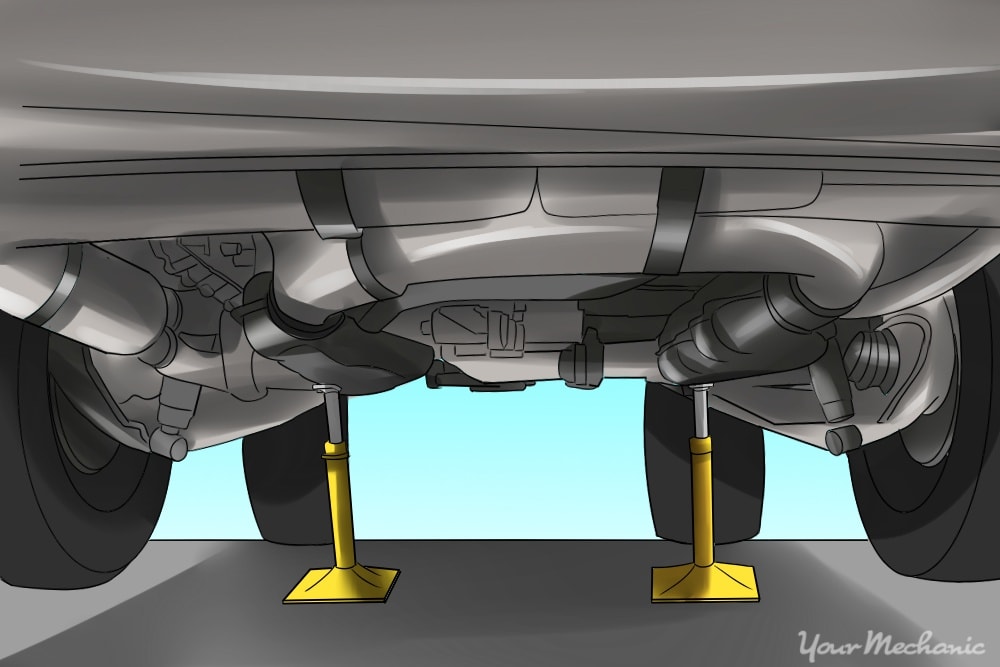
Step 1: Put chocks behind your wheels. Park the vehicle on a flat and level surface.
Use a wheel chock to block the tire opposite of the wheel that you will be working on first.
- Tip:If you are changing the driver's side front wheel bearing, you will will need to use a chock at the passenger rear wheel.
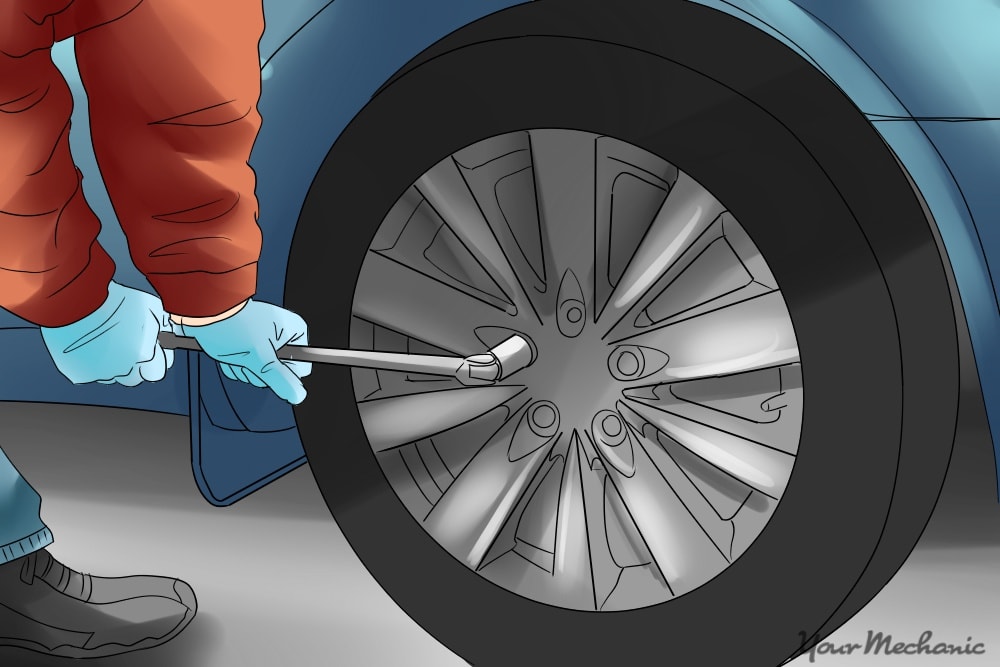
Step 2: Loosen the lug nuts. Grab your ½ inch ratchet with the correct size socket for your lug nuts.
Loosen the lug nuts on the tire you are about to remove but do not remove them completely just yet.
Step 3: Lift up the vehicle. Use the floor jack and a pair of safety jack stands to lift and secure the vehicle. This will allow you to safely remove the tire.
- Tip: Be sure to refer to your owner's manual for information on where the proper lift points to jack up your vehicle are located.
Step 4: Remove the lug nuts. With the vehicle lifted and secured, remove the lug nuts completely and then remove the tire and place aside.
Part 2 of 3: Install new wheel bearings
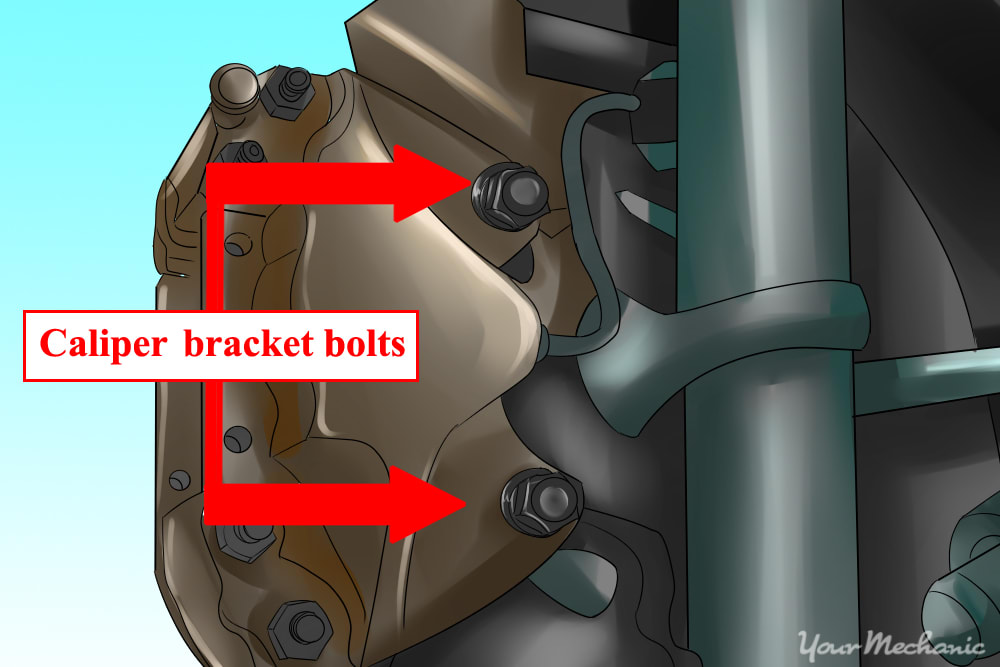
Step 1: Remove the brake caliper and bracket. Use your ratchet and ⅜ socket set to unbolt the disc brake caliper and bracket from the spindle. Use a screwdriver to remove the caliper itself.
- Tip: When removing the caliper, be careful not to let it dangle freely, as this can damage the flexible brake line. Use the wire hanger to hook it on a secure part of the undercarriage or hang the brake caliper on the suspension.
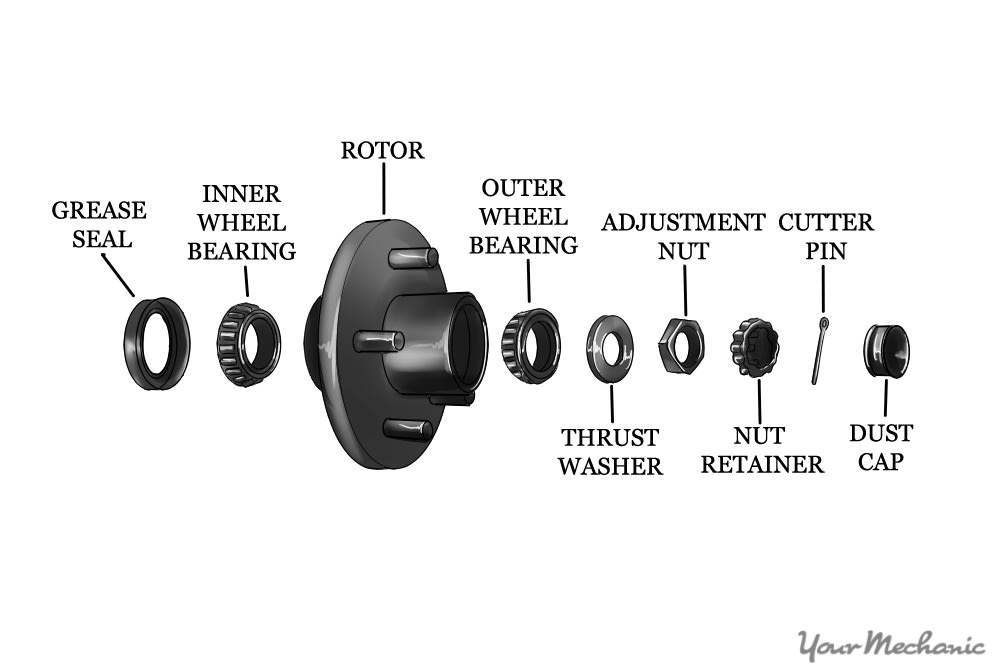
Step 2: Remove the outer wheel bearing. If the wheel bearings are housed inside your disc brake rotor, as often seen in trucks, you will need to pry off the central dust cap to expose the cotter pin and retaining nut.
To do this, use your pliers to remove the cotter pin and retaining nut and then slide the rotor forward to release the outer wheel bearing(smaller wheel bearing).
Step 3: Remove the rotor and inner wheel bearing. Replace the retaining nut on the spindle and grab the rotor with both hands. Proceed to pull the rotor off the spindle, allowing the larger inner bearing to get caught on the retaining nut, and release the bearing and grease seal from the rotor.
Step 4: Rub bearing grease into the casing. Place the rotor face down on the floor with the back side facing upwards. Take the new larger bearing and rub the bearing grease into the casing.
- Tip: The easiest way to do this is to wear a glove and scoop a fair amount of grease into the palm of your hand and rub the bearing into your palm, forcing the grease into the bearing casing.
Step 5: Install the new bearing. Place the new bearing into the back of the rotor and apply grease to the inside bearing cavity. Install a new bearing seal over the new larger bearing and slide the rotor back on to the spindle.
- Tip: A rubber mallet can be used to tap the bearing seal into place.
Pack the new smaller bearing with grease and slide it on to the spindle inside the rotor. Now install the thrust washer and retaining nut onto the spindle.
Step 6: Install a new cotter pin. Tighten the retaining nut until it is snug and turn the rotor counterclockwise at the same time.
Tighten the retaining nut a ¼ turn past snug and then install a new cotter pin.
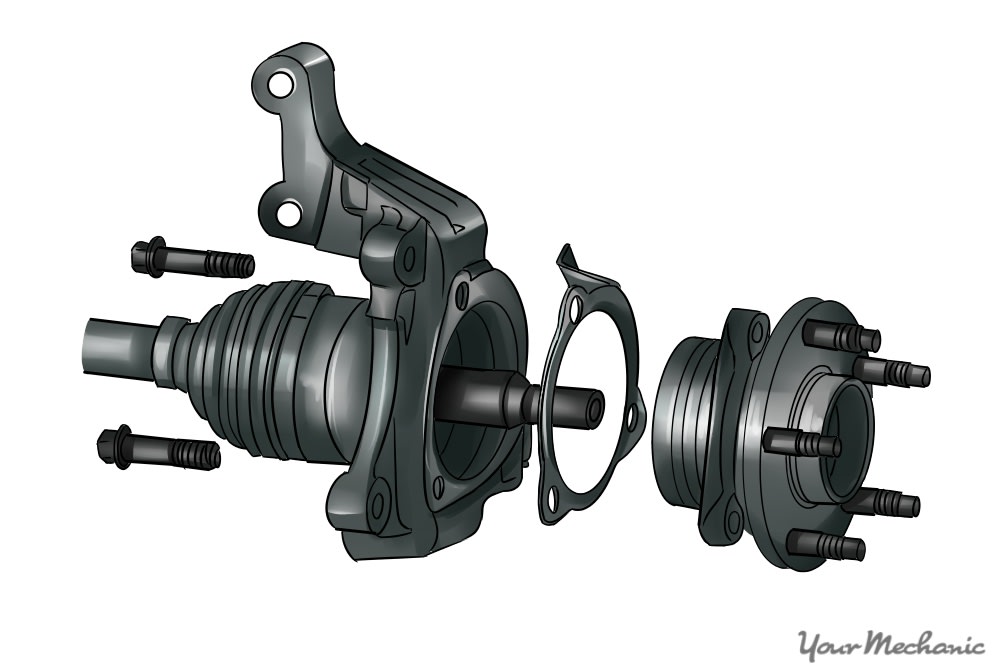
Step 7: Unbolt and replace the hub. Some cars have permanently sealed front wheel bearings as shown in the image above. The rotor mounts on a hub that contains the pressed-in wheel bearing.
Bearing assemblies on front or rear non-driven axles are mounted between a wheel hub and a simple spindle shaft.
- Tip: If your bearing is housed inside a hub that can be unbolted, simply use your ratchet to unbolt the hub from the spindle and install a new hub.
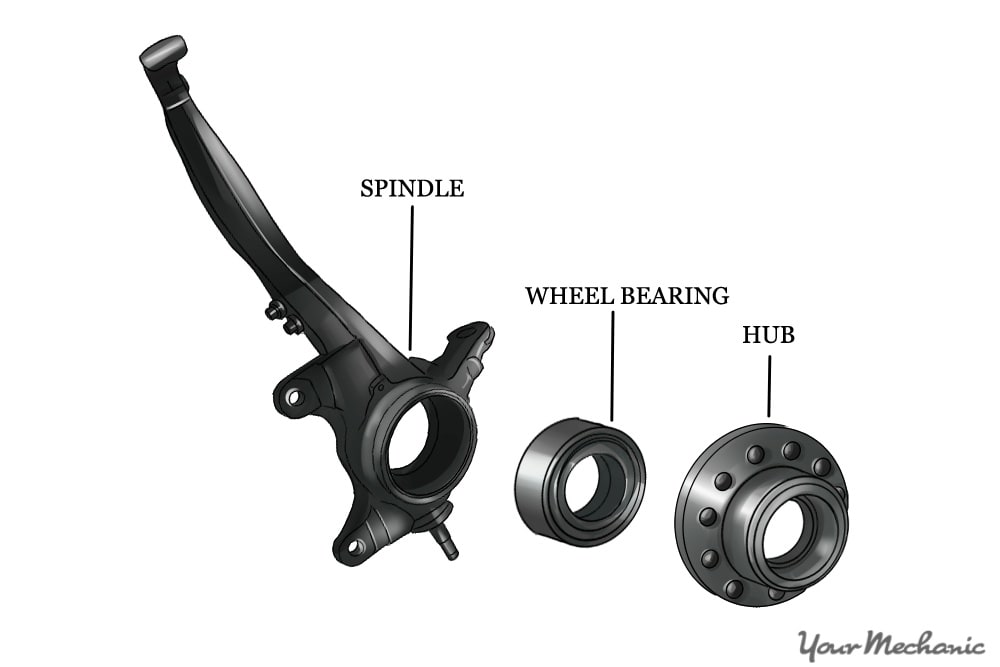
Step 8: Remove the spindle if needed. If your bearing is pressed into the spindle, it is recommended that you remove the spindle from the vehicle and take both the spindle and the new wheel bearing to your local repair shop. They will have the specialty tools to press out the old bearing and press in the new one.
In most cases this service can be done inexpensively. Once the new bearing pressed in, the spindle can be installed back on to the vehicle.
Part 3 of 3: Reassembly
Step 1: Put the brake rotor and caliper back on. Now that the new bearing is installed, the brake rotor and caliper can be placed back onto the vehicle using a ratchet and the appropriate sockets that were used to remove them.
Step 2: Install the tire. Replace the wheel and tighten the lug nuts by hand. Support the vehicle with a floor jack and remove the safety jack stands. Slowly lower the vehicle until its tires just touch the ground.
Step 3: Complete the installation. Use a torque wrench to tighten the lugnuts to manufacturer specifications. Lower the vehicle completely and remove the floor jack.
Congratulations, you have successfully changed your vehicle's wheel bearing. It is important to perform a test drive after changing the wheel bearings to ensure that the repair is complete.. If you encountered any problems while changing your wheel bearings, call a professional mechanic, such as one from YourMechanic, to replace them for you.
The statements expressed above are only for informational purposes and should be independently verified. Please see our terms of service for more details
fernandezsomet1976.blogspot.com
Source: https://www.yourmechanic.com/article/how-to-change-wheel-bearings-by-rocco-lovetere
0 Response to "Blue Print of Nissan Versa Rear Wheel Bearing"
Post a Comment